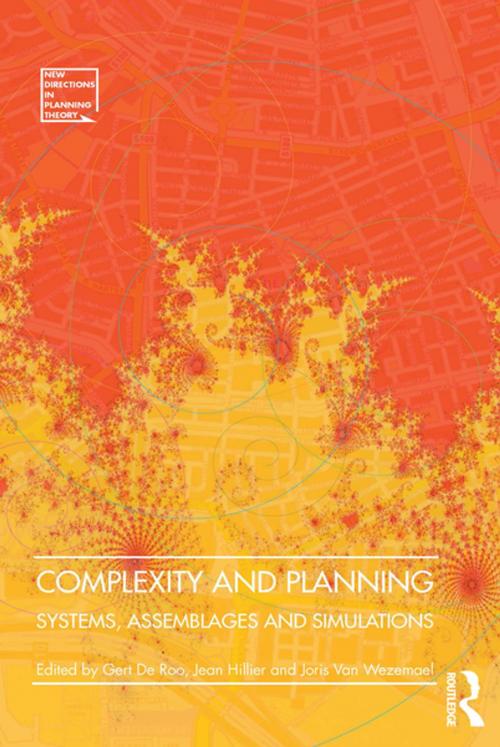Complexity and Planning
Systems, Assemblages and Simulations
Nonfiction, Social & Cultural Studies, Political Science, Politics, City Planning & Urban Development| Author: | Gert de Roo, Jean Hillier | ISBN: | 9781317162759 |
| Publisher: | Taylor and Francis | Publication: | May 23, 2016 |
| Imprint: | Routledge | Language: | English |
| Author: | Gert de Roo, Jean Hillier |
| ISBN: | 9781317162759 |
| Publisher: | Taylor and Francis |
| Publication: | May 23, 2016 |
| Imprint: | Routledge |
| Language: | English |
Complexity, complex systems and complexity theories are becoming increasingly important within a variety disciplines. While these issues are less well known within the discipline of spatial planning, there has been a recent growing awareness and interest. As planners grapple with how to consider the vagaries of the real world when putting together proposals for future development, they question how complexity, complex systems and complexity theories might prove useful with regard to spatial planning and the physical environment. This book provides a readable overview, presenting and relating a range of understandings and characteristics of complexity and complex systems as they are relevant to planning. It recognizes multiple, relational approaches of dynamic complexity which enhance understandings of, and facilitate working with, contingencies of place, time and the various participants' behaviours. In doing so, it should contribute to a better understanding of processes with regard to our physical and social worlds.
Complexity, complex systems and complexity theories are becoming increasingly important within a variety disciplines. While these issues are less well known within the discipline of spatial planning, there has been a recent growing awareness and interest. As planners grapple with how to consider the vagaries of the real world when putting together proposals for future development, they question how complexity, complex systems and complexity theories might prove useful with regard to spatial planning and the physical environment. This book provides a readable overview, presenting and relating a range of understandings and characteristics of complexity and complex systems as they are relevant to planning. It recognizes multiple, relational approaches of dynamic complexity which enhance understandings of, and facilitate working with, contingencies of place, time and the various participants' behaviours. In doing so, it should contribute to a better understanding of processes with regard to our physical and social worlds.















